UNNAMED LAND: AIR PORT CITY (2013-2020)
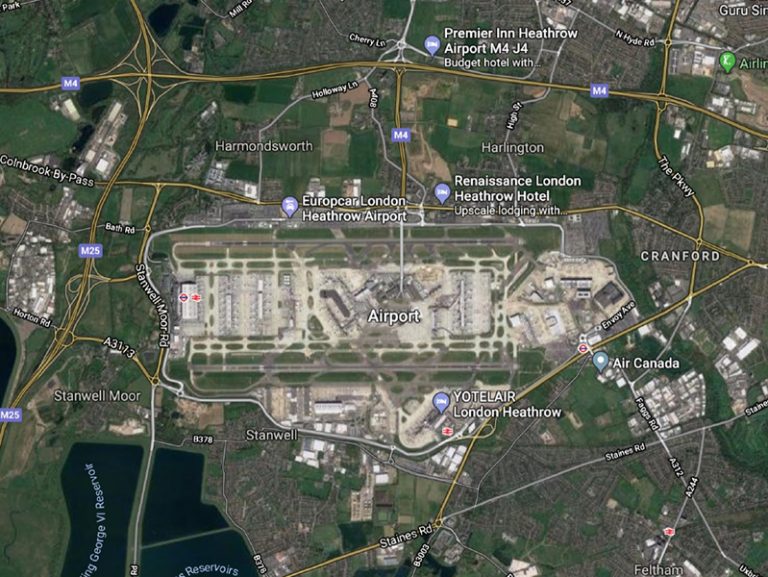
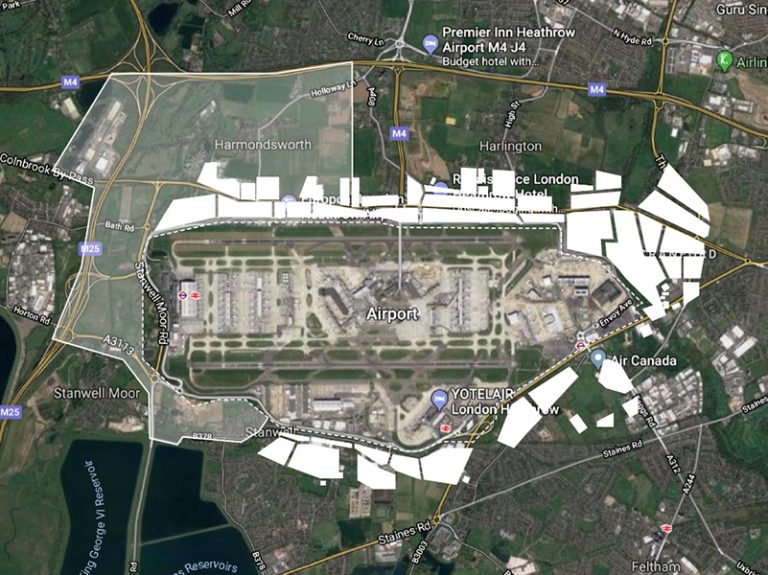
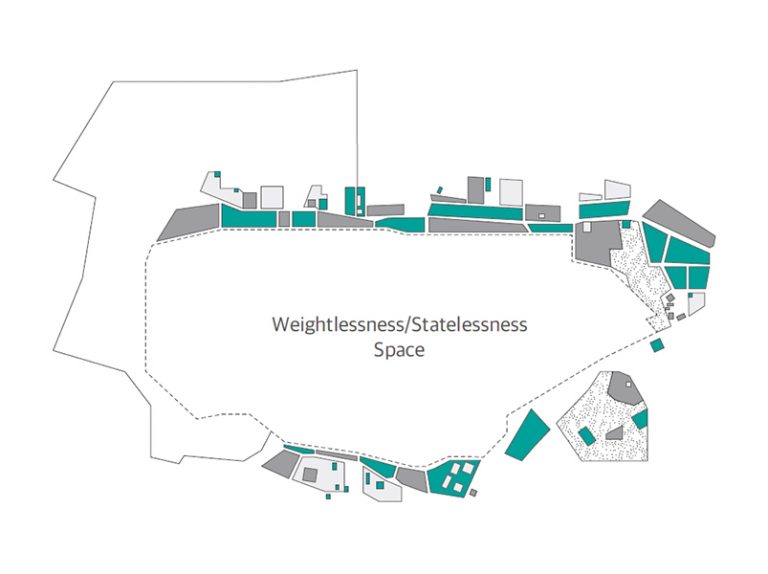
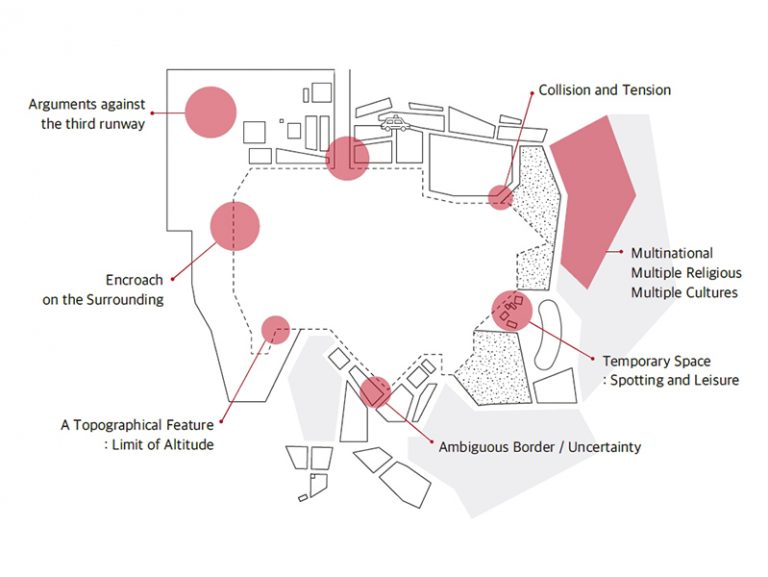
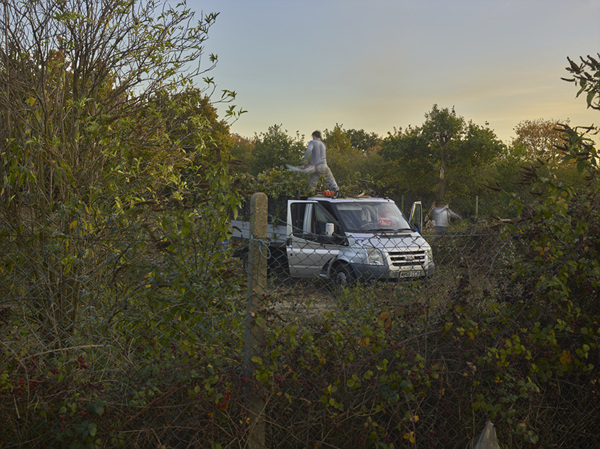
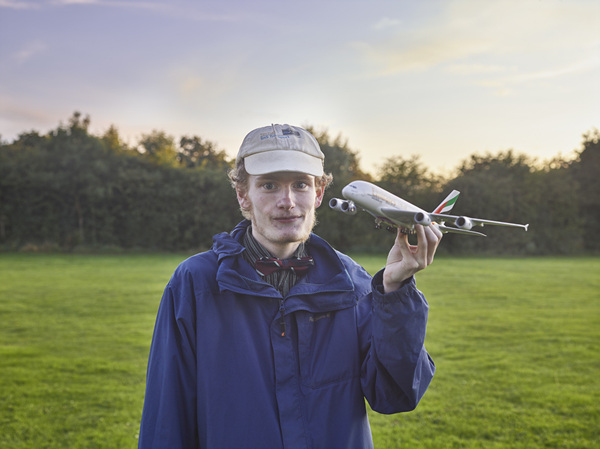
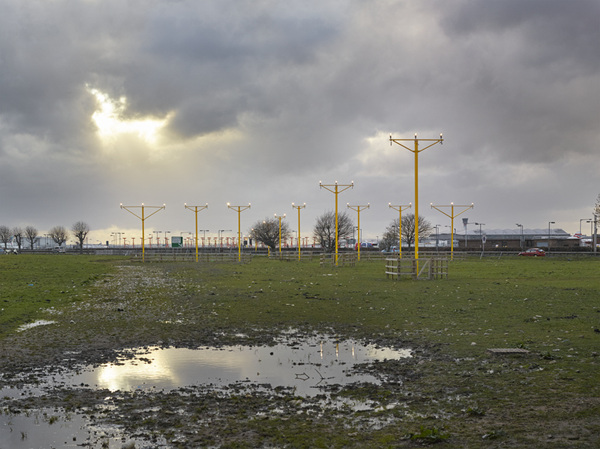
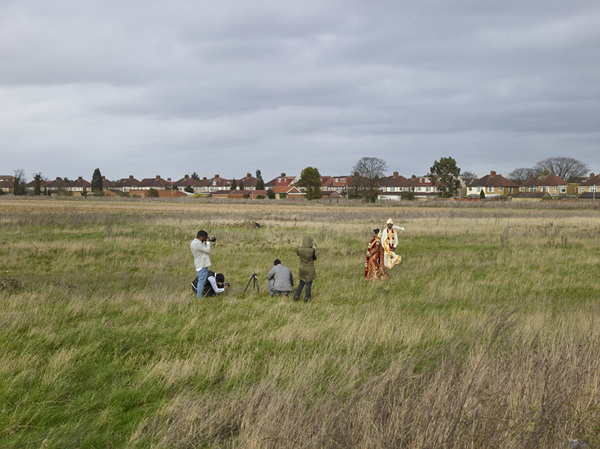
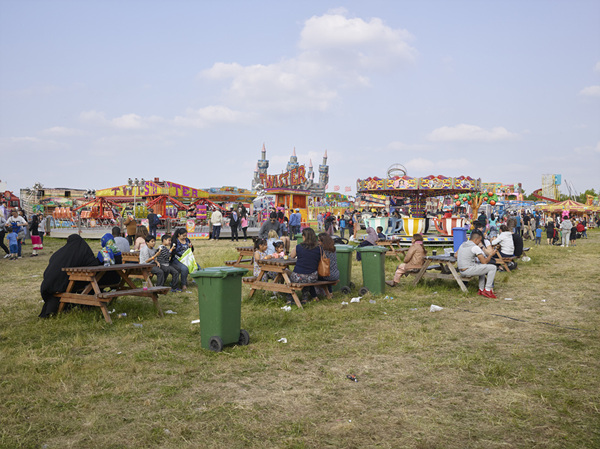
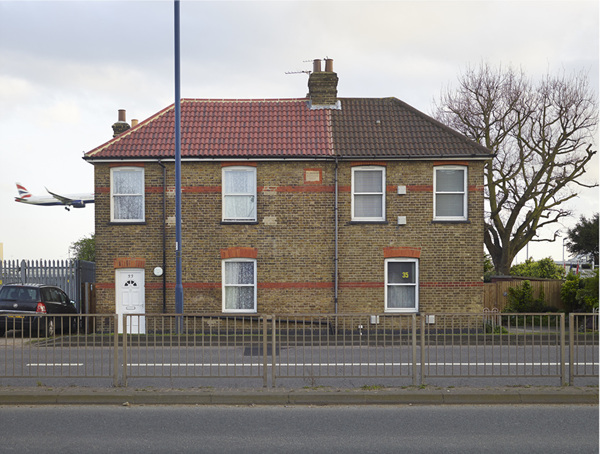
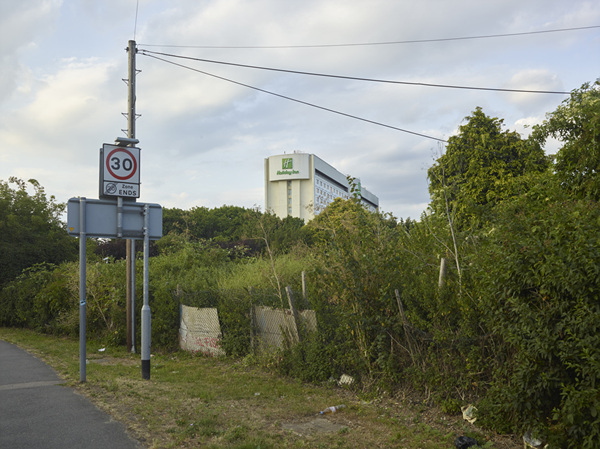


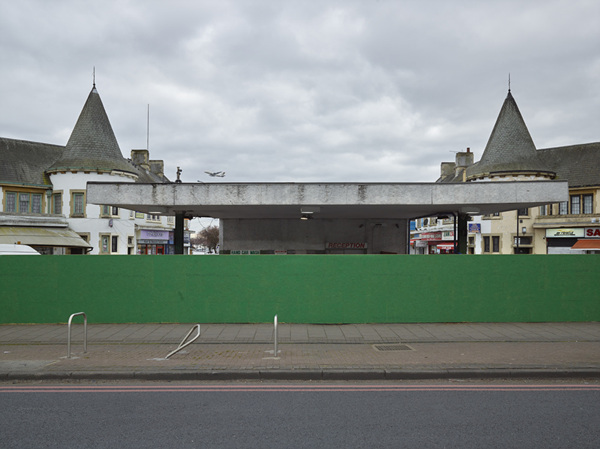
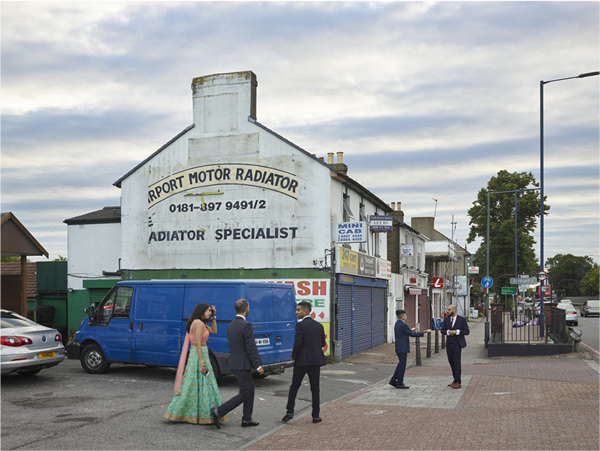
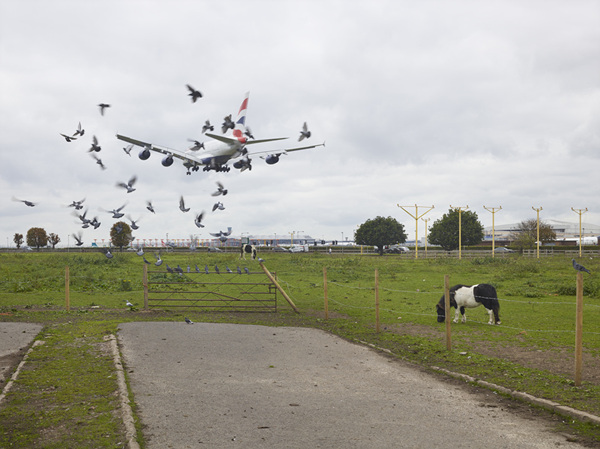
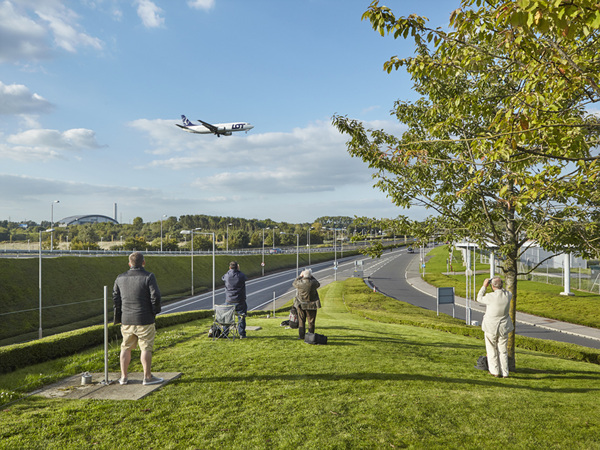
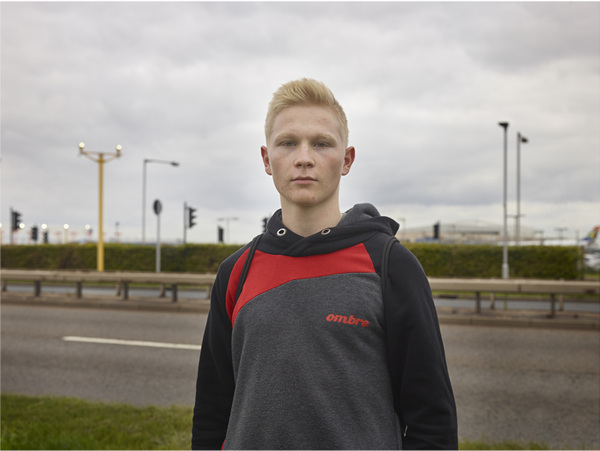
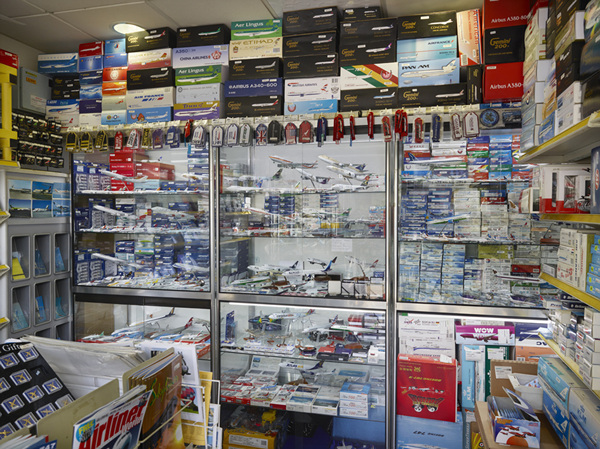
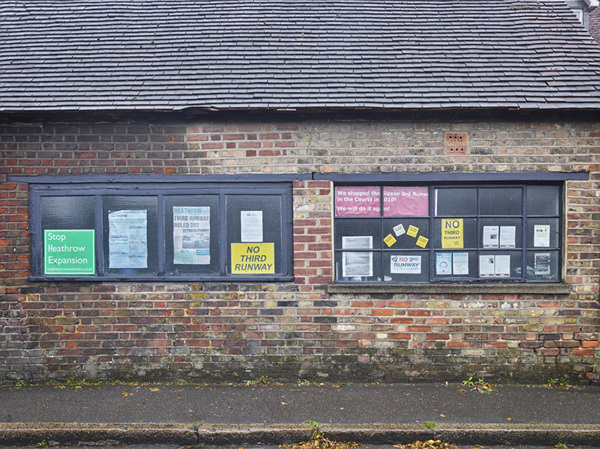
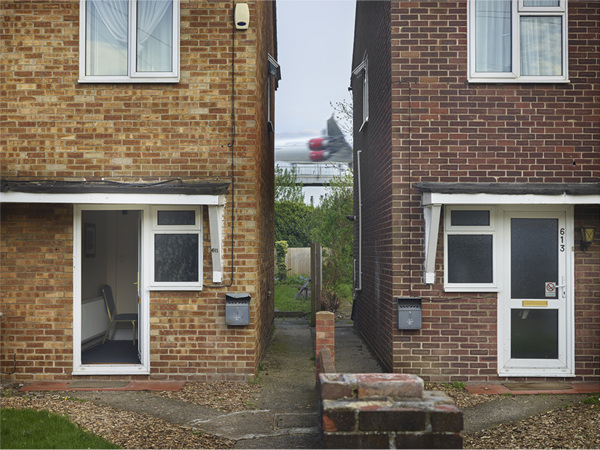
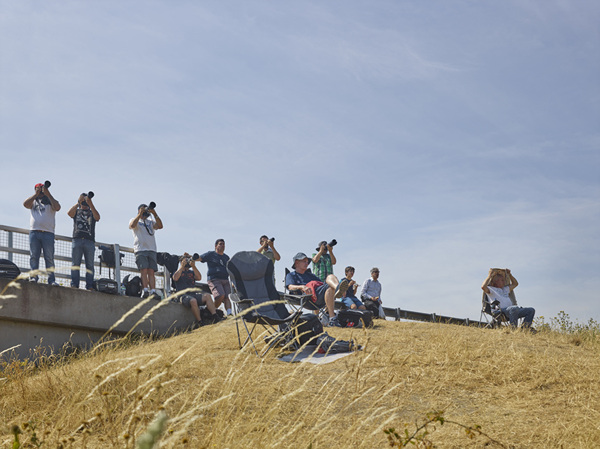
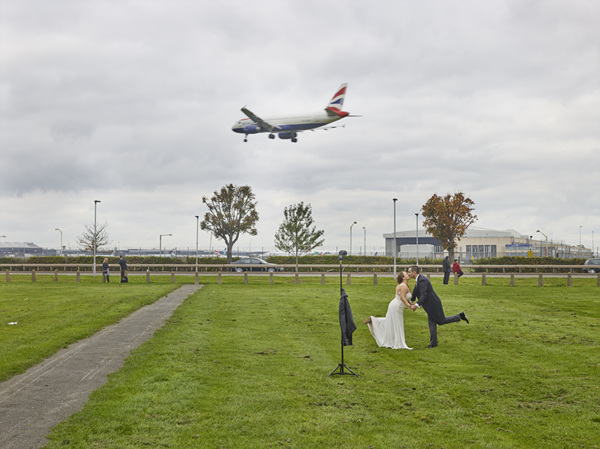
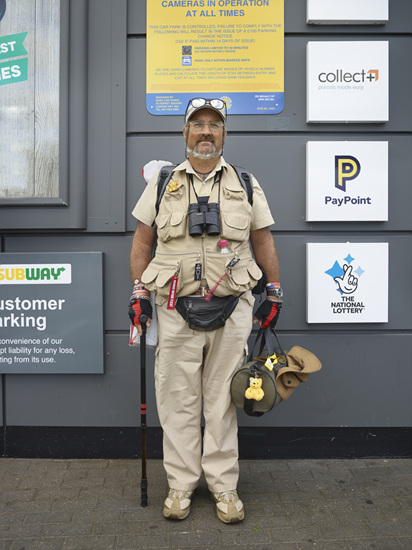
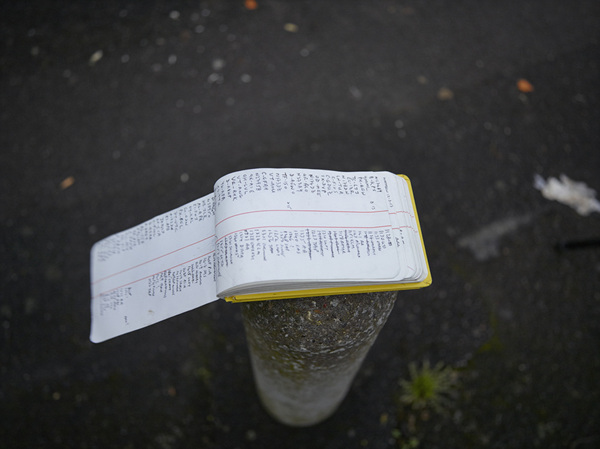
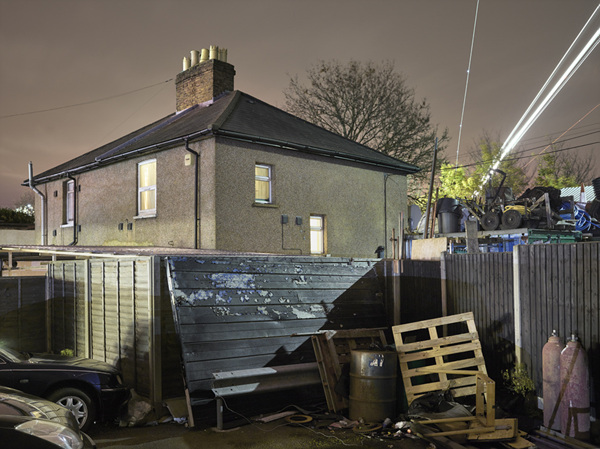
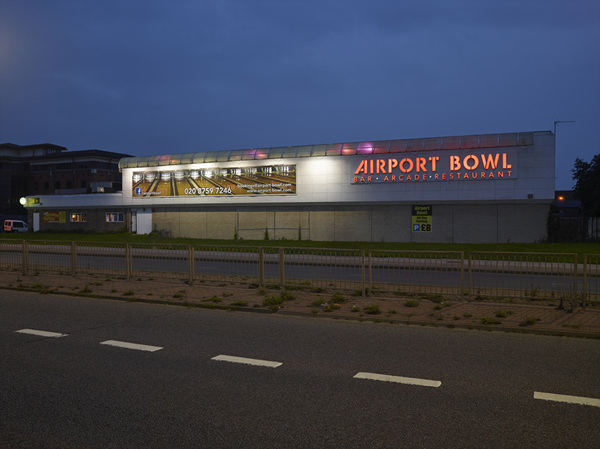
Unnamed Land: Air Port City
I have regularly travelled to and from the Heathrow airport more than 2,500 times since 2010 and the many photography I have taken there formed the series Unnamed Land: Air Port City.
Airports require extensive space and facilities. Consequently, there are numerous things within and around airports for the many different kinds of visitors. Travel by aeroplane is a physical movement in the air which challenges time and space on the ground. Generally, people visit airports so they can reach somewhere physically distant which often creates excitement and anxiety for travellers.
Over a long period of time, I have met vast numbers of people resident nearby or visiting the area for work, leisure and various other reasons. Outside of the airport, there are small towns where expensive parking charges can be avoided, minicab drivers from Southwest Asia have a quick meal at a Kurdish kebab truck while waiting for passengers, and Albanian immigrants wash minicabs on street corners under the path of the aeroplanes.
A couple wearing Sri Lankan traditional dress have their wedding pictures taken in a restricted access open space near the airport as if from a scene in a movie. Over the fence at the other side of the runway, with a decades-old telescope with worn out rubber, a middle-aged Englishman tries to jot down the serial numbers carved onto the rear of the aeroplanes which take off every 2~3 minutes.
Heathrow Airport first opened on 13th May 1946 with 18 air routes. For half a century since then, just like other modern public facilities, the airport has expanded due to an unexpected increase in demand. What used to be agricultural and residential areas have been cleared and now there is an awkward coexistence between the existing and newly expanded areas. For this reason, you often see strange scenery around the airport. There is a big empty space over the airport fence or sometimes fun fairs being held in the open space next to the airport. Immigrants from many different cultures reside in the houses near the air paths. Furthermore, there are constant controversies over runway expansion and adverse environmental impacts on residents. Many tension of modern society can be witnessed here.
The boundaries of the airport and surroundings seem clear but often they can be vague and obscure. The runway is blocked with a high fence but it is connected to a bypass slip road outside the airport, a huge long-term parking lot, rental car companies, hotels and many other airport-related facilities which are lined up like dominoes and make it hard to get through the airport boundary.
The fragmented space around the airport acts as a buffer for villages neighbouring the airport. Like the Demilitarized Zone between South and North Korea, the unnamed land owned by the airport between the airport facilities and villages is normally restricted for public access but is temporarily open to the public and residents at certain times for events and festivals. At these times, the tension and uncertainty of the fragmented area temporarily fades away.
Areas surrounding airports create strange scenery and attract diverse people. Although airports are essential elements of big cities as they connect with distant cities, ironically cities are unable to. Airports require a huge area which is not available within existing cities. Moreover, the flight noise makes it impossible for them to be located in city centres. Therefore, airports generate their own surroundings in a relatively short period of time on the outskirts of cities.
Since its official opening 72 years ago, the airport is still relentlessly expanding. As I focus on the area which I named “AIR PORT CITY” and people surrounding the airport city rather than investigating its interior and intended purpose, paradoxically its spatiality is revealed.
YouTuber and Spotter
The person holding an aeroplane model is a YouTuber of a channel that covers a wide range of forms of transport around the world including uploading videos of aeroplanes taking off and landing. The aircraft model he is holding is a 1/200 miniature model of an Airbus A380. Although it may seem to be just a toy it is actually a delicate model worth about £130.
Not only A380 aircraft, but a wide range of aeroplanes from all around the world constantly take off and land at Heathrow airport. Martin, a middle-aged white man I met around the airport, was a spotter.
He used to observe aircraft all day on every weekend with his telescope and note down a list of all the aircraft model numbers taking off and landing at the airport. People like Martin who observe and record aircraft for a hobby are called spotters. There are a few websites, guidebooks, and shops catering for spotters. The bleak and desolate land around the airport may seem like an amusement park for them.
Photographer License
I happened to speak to a stranger, whose hand was badly injured, on the street. An airport cleaner from Eastern Europe had a severe skin problem on both hands and was unable to continue in his job. He lived on one of the streets right under the flight path which constantly suffers from tremendous noise. I was invited to his place and he shared his daily life. He was sharing a flat with a few other workers.
He told me about his hometown in Poland and while discussing life in his homeland he showed me his most precious belonging, a note written in Polish. Apparently, it was a photographer’s license obtained in Poland. He continued with his story and said he had run a photo studio in his hometown. In contrast to his reality as an alienated worker who was unwell and isolated, he seemed confident and proud of his past career as a photographer.
Mutually Casual and Temporary
While I was taking a photography around the airport area, I often thought about how being a flight attendant would be one of the best jobs for photographing every corner of airports around the world. After interviewing flight crew, however, they often did not seem that fascinated by the areas surrounding airports. I was told that they normally stay in nearby hotels while staying in foreign countries except for occasional sightseeing in downtown areas using shuttle buses. Therefore, a majority of flight crew have few memories or thoughts about airports.
The space around airports exists but does not seem to be recognized by the crew. It may look like a uniform which hangs in the wardrobe of a nice and neat hotel room which exist nearby but never get much attachment.
———————————
Tenaciously building up.
An interview with Shinwook Kim (Jisu Park, Editor VOSTOK)
You have been consistently working on recording airport areas. What are the elements of airports that attract you?
Nothing really special, actually. Maybe time makes it special. You hardly see the essence of a place or thing by just observing it a couple times or staying for a week or so. Nothing is that simple and easy. The process of persistently observing and collecting is essential to figure out the essence of something and this requires considerable time and experience. Hence, over 8 years, I have naturally been to and from airports over 1,000 times. This has enabled me to acknowledge various aspects of airports such as the particular smells and sounds in airport environs and the features of people in the space around them. There is a unique and unexplainable atmosphere around the airport which is a marginal space, a strange intermixture of the everyday and the unusual.
Compared to the previous art pieces which mainly focused on landscape, this time your work seems to have expanded into various fields such as portrait, daily life, and objects. Is there any reason for this change?In many respects, I have experienced — and continue to do so — a series of failures and frustrations. In January 2017, I made a decision to change all existing methods to cope with all of the challenges that I have confronted over a long period of time. From that time I started to intentionally approach the objects and landscapes that I had not paid much attention to previously. I realized that I was not ready to look into the essence of space and, therefore, I missed important elements despite the fact that there had been plenty of objects to observe. As I started to deal with more diverse objects, the stories within the picture seemed to become richer in content. They all seemed to have special stories especially the worker’s old certificate and images on the notebook. The objects and characters within the series are all connected to the spatial aspects of the airport. When stories hidden beneath the images become richer, they function as a bridge to help approach a certain theme from a more diverse perspective. When you approach an image, the stories behind it come out and are connected to the frame of the wider world. This is how I collect and observe objects.
In general, you have shown a calm and objective attitude in presenting your artwork. However, you sometimes present a subjective perspective on the picture of an ironic scene. What do you generally intend to maintain in showing your artwork?
Although in daily life we manage to maintain peace and order, we sometimes happen to confront unexpected problems. Likewise, around airports, there seems to be a general order. However, peace is vulnerable to unexpected incidents. Luckily, I have been able to spot some unique incidents that are only captured in airports and which often dramatically reveal their spatial characteristics. These were irresistible to recreate through artwork.
Nonetheless, personally, I believe that a calm and objective approach is appropriate in explaining a certain place or object in general.
What further plans do you have for your art projects?
This project will eventually be finished in the future when I no longer go to airports. Personally, I believe nothing is beyond time. Therefore, my only goal for this project is to continuously work on it. For now, I am focusing on preparing for the exhibition this year. I was invited to Toulouse in France for an exhibition. I know it is just a coincidence but I feel amazed by the fact that the headquarter of Airbus, the biggest European aircraft manufacturer, is located within the city of Toulouse. Also, I plan to hold an exhibition in Korea in December and publish a book of poetry.
———————————————————————————————————-
A landscape of reality projected onto vacant space _ Independent Curator Kwon Hyuk-Kyu
Posted to Kim Shinwook’s
I recall a landscape without places, and the time that ownerless experience can sustain. Countless unnamed events pass by in everyday life. The shoes of a man crossing the street caught by the eye of the beholder in a car awaiting the changing of traffic lights; the back of a random person who temperamentally hits my bag while passing me on the bustling road on the way home from work; and the unrealistic scenery of a resort found while randomly searching on a smartphone. Such a series of nameless experiences occurring in uncertain places seek eternity in daily life.
More than most, Kim Shinwook’s daily life is filled with such placeless landscapes and ownerless experiences. The artist, who lives in London, travels to and from the airport almost every day. This is not for personal reasons such as travel but actually for quite the opposite. His job involves assisting people travelling to London, either picking up travellers from the airport and dropping them off somewhere in the city or taking them from the city out to the airport. Fields, roads, and occasional factories and warehouses fill the everyday life of the photographer who travels to and from the airport outside London. Although he started the job by chance, it continued for over eight years, and he has now travelled to and from the airport over a three thousand times.
What kind of space is the airport? A mix of things coexists at the airport. Various races and cultures, intangible violence disguised as screening and censorship, and blatant discrimination based on the national interest are revealed through multiple measures of behavior. There is also a strange tension and excitement on the faces of people who have come to see someone arrive or depart. The airport is an odd place where reason and unreason, presence and absence coexist. Kim seems to have learned more about this strange space, the airport, which has become his workplace. He describes all the details such as the fastest route from the airport lounge to the car park, the location of terminal cafes, the various amenities at the airport, as well as the billboard image emblazoned at the airport exit. Furthermore, he remembers the smells and sounds of the airport, the colours of the lights, the types of carpet, and even the voice of the Indian British men who clean the toilet. Actually, more than just assembled memories, they are more like experiences accrued over a long period of time. An artist naturally develops various insights into a place after learning about it in this way, and these are closely linked to his artwork.
How is the airport described in his work? His photographs, which do not convey clear drama or narratives, seem rather understated. In fact the major subject area for his for his camera is not the airport itself but the marginal areas around it such as the vacant lots, green fields and sparsely located residential areas nearby, The early work of the airport series, mainly comprising pictures of the landscapes around airports, display minor events and are almost bare. The feeling of such a vacuum remains intact even in his recent works which expanded to cover objects and characters. Typical images of people meeting and waiting in the airport, or of censorship and control, are not found anywhere in his photos. Kim, who knows about the airport so intimately, strangely only concentrates on landscapes and marginal spaces where typical airport scenes are not to be found.
Let’s take a closer look at the images. Couples in Sri Lankan traditional clothing are taking wedding pictures in the face of a strong wind in a wide-open field that seems to be near the airport. Also seen near the airport, a small children’s party is held next to a temporary amusement park in a rather dreary field. Another photo shows a private taxi driver posing in front of a brand new car, and a middle-aged man whose hobby is recording the serial numbers of planes taking off and landing at the airport every week. In addition, the flight crew’s simple wardrobe, empty roads next to the airport, houses divided into runways and walls, and old abandoned facilities at the airport were captured by his camera.
Kim focused on the obscure areas around the airport and named the spaces “Unnamed land”. So what is the purpose of a picture that the photographer neglects to name? Heathrow Airport, the main location for his photography, was originally farmland. It then served as a military airfield during World War II and then officially opened as an airport in 1946. The airport has since steadily expanded on its current site over more than half a century. Several new terminals and additional facilities were built as needed. The expanded airport now occupies a vast area that is difficult to accurately measure in size. And the extensive land is not incorporated into the city but only works alongside it.
At airports, places which are often outside cities due to problems related to noise and the environment, one can find the scenes of life that are hidden, and perhaps rejected by the city. There are a wide variety of social and cultural signs crossing the empty-looking landscape in striking images such as that of couples taking wedding photos in an abandoned site in a residential area near the airport with a large immigrant population; the serial numbers of planes as they are recorded by a retired Englishman as his only hobby; workers who suffer from noise pollution in homes divided by walls right next to the airport, and their frequent protests and festivals. In this way, with his subtle images, the artist compressively but intimately displays various issues of the cities and suburbs including migration and labour, religion and race, and environment and development.
In addition, photographs can even detect the photographer’s personal emotions as they are provoked by the airport. A cold image might reflect his experience of such a place. Imagine his daily life of driving to and from the airport. Before reaching the airport, he would pass through countless meaningless sites. In a foreign city, feeling still alienated in spite of more than 10 years of residence, he encounters endless nameless places such as endless highways with wide fields on either side, occasional factories, the carpark of a rental company and old business hotels. In addition to this, he has the attendant worry that the person he is meeting might not turn up on time, that the flight will be delayed, or that there will be congestion on the way back into the city centre. He may even send text messages in vain to someone who doesn’t have reception on their phone as they have not even landed yet.
Through this journey of non-place and un-experience which connect like dominos, the photographer arrives at the airport but it is also another non-place. An airport that comes at the end of a space which exists without relationships, history, or place, may appear to be a collection of emptiness. His everyday life as a writer is naturally embedded in the space which the picture reflects. The task of objectively observing a place that is most closely related to one’s life is to carefully wrap up the social and cultural narratives inherent in the place as the inner feelings of the artist in space. The images of a series of observations and personal experiences are seemingly described objectively but suddenly they reveal his feelings and emotions likes the novels of Alain Robbe-Grilllet.
French anthropologist Marc Auge’s explains that the writer’s non-site space such as roads, fields, and airports are spaces of solitude. Most of the photographer’s daily life exists in such a solitary place. However, in light of the work, the solitude of the space could be re-established as an imaginary space that projects the real world rather than as a limited space that is tightly blocked off. Kim discusses space and his personal relationship to it and converts the space of the place into an image which embodies diverse social and cultural stories. Photos of unoccupied landscapes and ownerless experiences are taken to give a name to unnamed land while wandering around such non-places throughout the day. The reason such photos can ironically display such a diversity of meaning and context is because he set the airport as a space which creates reality in its own non-place space. His photographs, which are not intended as obvious symbols and signs, reveal both the writer’s inner landscape and the social and cultural context of the place while attempting the difficult task of objectively approaching the objects. Please note how the photographer continues to reestablish the non-place space of the airport in his future work through images which convey inner landscapes through such social and cultural stories.
Kwon Hyuk-Kyu
Independent curator
——————————————–
At most, he went to England and only wandered around the airport. Lee Young-june
Why are there no decent restaurants near Seoul Station, Busan Station or Gwangju Station except for that particular pork soup restaurant in front of Busan Station? Not many people would disagree with my harsh statement despite the fact that each person’s taste is very subjective. Why is there no good residential space around stations? A good living space requires good housing (including communal houses), good schools, good shops and parks, and other favourable conditions regarded as good for living in.
There are some commonalities between good food and good living space. Both are only possible when people have a desire to stay. A station or an airport is not a place to stay. Everyone goes there to get on the train or the plane, stays for a few hours, and then leaves. They are only interested in their destination, not so much in the space in which they are temporarily staying. So is such a space always transient, empty, and meaningless? Kim’s picture clearly says this is not so. In that case, is such a space always vain, empty, and meaningless? Kim’s pictures say it isn’t. Time, the counterpart of space, is what is required to look into such unoccupied space. According to physicists, time and space are inseparable, or time is only artificial in the way it is measured by humans in the form of hours and months. In other words, the universe is just there without the flow of time despite the fact that humans intentionally adopt it as if pieces of time are attached to the universe. The reason why the station and the airport surroundings seem meaningless is because they are seen as places and times discarded by people. If you leave the dimension of time spent and just stay there, space will return. Shinwook Kim has revived the space around Heathrow. But it’s interesting that it was achieved in the very short period of time it took to capture the photographs. Photographs are taken in a split-second. In Buddhist language, a moment refers to one-75th of a second. This is usually the time needed to take a picture with a 50-millimetre standard lens and it will take a little longer if you tighten the aperture with a large camera. We may regain space only if we abandon artificial and fragmented time created by humans. But how can we then do that with photographs taken at one moment in time? In fact, it’s not in the moment that pictures are made, but the time during which the pictures are not taken. In the meantime, photographers observe, talk, smell the wind, listen to Indian music and think useless thoughts. (A great number of Indians seemingly live near Heathrow airport.) It is during that time that pictures are made. The moment the shutter is pressed is only one small piece of that long time. Space is reborn in a dimension where time becomes thin. The photographer’s eyes become trained to the time-space complex, and the characteristics around the airport were captured. He describes what he came to realise by spending time around the airport in the manner shown in the following diagram.
This diagram shows that the airport, where anyone can pop by, a space thought to be a peripheral part of the city and country, is actually rich and complex. This diagram displays that the airport is an unusual point at which numerous centres and surroundings overlap and intersect. Heathrow Airport is one of the centres of air traffic in Europe, one of the world’s centres. London, of course, is one of the important centres in the world and Europe. Nonetheless, not only the city itself but also the airport has more than one single characteristic. There are many surroundings in and around the area. Near Heathrow, for instance, there are small unknown towns like Cranford, Harmondsworth, and Harrington. They are small, sparsely populated, and not particularly functional towns. Of course, the town is also divided into a center and periphery. There is no big shopping centre as it is just a small town, but it has a high street with some busy bars and supermarkets at the centre and also a less busy neighborhood with fewer tracks at the periphery. Likewise, Incheon International Airport also has numerous central and peripheral variations. The airport aims to become a center for both the world and Asia through slogans such as “Asia Hub Airport” and “Global Leading Airport.” Incheon Airport is not the world’s main airport yet but, unlike the area surrounding Heathrow, there are many new centres such as new Incheon Yeongjong City and many new golf courses are being developed around the airport. Of course, there are also unknown old towns around Incheon Airport such as Majangpo, Jangchon, Shinbuldo, and Sammok Port. These areas are regarded as peripheral as they have been pushed into new facilities without much difficulty which may not be a pleasant change for the residents of the old towns.
After all, airports have the duality of connection and division. The airport is an airway connecting one area to another. On land, however, there is a strict division between here and there. Once you leave on a plane, you must wait a while until you can return. Even when inside the airport, you can’t leave once you enter the boarding area. The runway is also a place you are forbidden from entering. Such discontinuities accompany a series of separations and emotional lines. Airports around the world play a functional role in controlling these disruptions with their own design.
Before we discuss the pictures in earnest, I have to talk about my old airport story. As I am writing this article with my own memories of airports from the past, it would sound like nonsense not to include my own story. In the end, the whole point of this article would be to compare the colour of airports painted in my head and those painted through Kim’s lens. I was born in the 1960s when it was a big deal to visit the U.S. for whatever reason. In the 1970s, per capita GDP was $280 in Korea and $5100 in the United States, which shows the massive gap. So, when even a distant relative was leaving for the U.S., many family members gathered at Gimpo Airport. In the 1970s, there was a unique facility at Gimpo Airport, which was called Song Young-dae, so you could see family members flying on the balcony. Not beyond the window, but directly. What’s unique about the facility was the balcony was open to the airport’s mooring and the runway. When I watched from the Song Young-dae as people flew to another country, they looked like they were going to another planet in the universe. In 1972, I watched my uncle flying to Brazil with his family for immigration. I can still recall the vivid memory of my little cousin leaving, with his tiny waving hands. My uncle died in Brazil, and I only managed to meet one of my cousins once afterward. It would probably be impossible to communicate with the other one if we ever happen to meet as he would have forgotten all of his Korean and only speak Portuguese. They are now living in completely different places. They are less likely to come back to Korea after having flown over the Song Young-dae in 1972. The Song Young-dae was such a cold place of separation and parting.
In old days, it was very special to go somewhere by plane when people only applied for a single passport with a clear purpose such as official duty, business or studying abroad. This is unlike nowadays when it is common to have multiple passports. If someone had gone to the U.S. or England and once there done little more than wander around the airport, it would have been thought of as odd. Despite having a plan to visit the centre, it is often not easy. Of course, you can take a taxi or tube ride to the White House in Washington D.C. and look up the Empire State Building in New York, but that’s only possible when visiting as a tourist who only hover around the area. According to a Korean newspaper published in the U.S., the saddest word is “mainstream society” which refers to white people. The reason why people often mention mainstream society is because, needless to say, a large proportion of Koreans in the U.S. live in marginal areas. But people want to go to the States because you can still buy a good house, a good car, and play golf with cheap money in spite of living in marginal areas.
It may sound a complete nonsense to say that he has been just hovering around the airport in London. After studying photography in London, Shinwook Kim has taken pictures hovering around the Heathrow Airport area. The difference between Korean immigrants and Shinwook Kim, who both live in the periphery of the metropolis in the West seems clear. The former longs to be part of mainstream society while hiding frustration of being marginalised, whereas the latter earnestly tried to figure out the meaning of living at the periphery. After spending several years around Heathrow, he finally found a number of topics relevant to the perimeter. In fact, the issues he found are familiar to geographers and social scientists, but not so much for photographers in general. It is significant that Shinwook Kim discovered these important issues by observing reality through his photographs around the airport. He expressed the complex geographical, political and cultural relationships surrounding the airport in the following terms.
1 Opposition and conflict over expansion
2 Peripheral erosion and expansion
3 Geographical features: altitude restrictions
4 Impact and tension
5 Multinational, multicultural, and multi-faith
6 Temporary space: hobbies, leisure
7 Ambiguous boundaries, uncertainty
He spent the years 2014-16 around the airport at night under the title Night Spotting. The photos look much more organised than they are today, but they are actually from before Shinwook Kim decided how to approach the airport area in his work. These pictures showed the aircraft’s navigational and anti-collision lights in a rather conventional way, drawing a long-light trajectory because of the long exposure time. It is a typical picture that comes from sites like Airliners.net. However, Shinwook Kim sets up houses around the airport in front of the scene of the light, clearly showing what he is paying attention to. In front of the pictures in the series are homes typical of those lived in by ordinary people in the United Kingdom. Some have flats and some have houses. Through these types of homes, Shinwook Kim has focused on the spatial and geographical conditions in which people near the airport live. However, as he may feel that the same format had been repeated in the series, he is now trying to increase attention on the various races, structures, commercial facilities and human behaviors around the airport. This suggests that he is slowly capturing the characteristics of the space around the airport.
One of the photos taken by Shinwook Kim, which is of a poster titled No Third Runway, is about the ‘opposition and conflict over expansion’. As Heathrow, the European hub airport, tried to build another runway due to a lack of capacity for airport facilities, there was huge opposition from neighboring residents and they adopted the phrase “No Third Runway” on posters. The phrase on the poster says that they managed to halt the runway extension plan in a 2010 legal battle and they can still achieve their goal this time. As the poster bears the words ‘No 3rd Runway Coalition’ it seems that the opposition to the runway is consistent and organised. This picture is more textual than visual. That is to say, it is not something you can instantly appreciate with a glance; it must be understood by thoroughly looking through the text in the picture. This is the exact opposite of Edouard Manet’s famous painting . There are bottles in the painting, and the painter adds the letters to the labels of the bottles with quick strokes. To be more accurate, the letters were not just crushed together but pictorially processed with the touch of a Manet-style painting that comprehensively covers the entire picture. Like his style of rushing over every subject, including faces, which unsettled the Paris public of the time, the letters were also painted in his style.
There’s nothing odd about a painter’s drawing. Manet had no choice but to do so since the time had not yet arrived when the writing in painting was clearly written. He would have had to wait until 1910 to name the wines correctly in his painting. As he died in 1883, the artist could not write clear text in the picture. In 1887, influenced by Zaponism, with Chinese characters, Van Gogh painted the Japanese painting “Ukiyo-e”. He literally drew Chinese characters as he was unable to read the scripts so, obviously, they were almost unreadable in the picture. Now that the boundaries of everything have been broken down in the 21st century, it has become extremely natural for writing to be included in pictures and photographs. So we can even just read letters in this picture of Shinwook Kim. Of course, there is a lot of visual information. The wall these posters are found on is an ordinary wall in suburban England. It’s not a nice building in downtown London nor an authentic farmhouse. This is a typical airport neighborhood wall. This wall is the very identity of this photograph. It is like a fingerprint that tells us for what reason some people put these posters in the space and why the photographer took this picture. Something which reminds me of this picture is a poster that I saw at the end of the runway at Narita Airport in Tokyo in the late 1990s. Narita Airport, which opened in 1978, has long been the gateway to Tokyo, and there was still a sign that said “No Narita Airport.” Perhaps those who oppose the expansion of Heathrow are aware of the campaign against the construction of Narita Airport. I don’t know if anyone who opposes Narita Airport is aware of Heathrow’s opposition to expansion, but the two opponents have been united in the memory of my long-time aviation interest. The beauty of this picture is such a strange connection.
What reminds me of this picture is a poster that I saw at the end of the runway at Narita Airport in Tokyo in the late 1990s. Narita Airport, which opened in 1978, has long been the gateway to Tokyo, and there was still a sign that said “No Narita Airport.” No Third Runway or No Narita Airport are the outcry of marginal individuals. It is an urgent voice that the residents will not be dragged back to the periphery once again as they had already been pushed to the airport area, a peripheral urban zone from the city centre. The protest in opposition to Narita Airport was initiated by the resident farmers who desperately desire to protect their own land near the airport site and this later led to an extremely violent political struggle by left-wing activists. In the October 1985 struggle, demonstrators were killed by tear gas fired by police. Demonstrators and police, and even drivers of heavy equipment vehicles who were mobilized for demolition, were also burnt by petrol bombs thrown while the demonstration tower was being demolished. This struggle is still ongoing even though it is not so violent now. No Third Runway is a symbol of a struggle at the periphery which is occurring internationally across the world. When Shinwook Kim took this picture, he probably didn’t know the history of this struggle. Even I only came to learn about the Narita Airport struggle while writing this article. In the end, a photo revealed the archaeology of the struggle.
Photos corresponding to the subject of ‘5 Multinational, Multicultural, Multi-faith’ are therefore interesting. Surely only people with insensitive ears could live around the airport and put up with the noise of aircraft taking off and landing. In fact, this statement is wrong. Around the airport is not a place for deaf people to live, but a place for people who cannot afford to live in the city centre. As a result, various ethnic groups are living together, and various cultural and religious symbols are visible. It is easy to conclude that the area around the airport is very dry and bland, but Shinwook Kim’s photos show that the cultural ecosystem is quite diverse. A healthy ecosystem has a diverse range of species. In that sense, Heathrow is a healthier ecosystem than people think, unlike the prejudice that it might be monotonous for some reason. However, this is not apparent until you see his pictures. This is because he spent a long enough time around Heathrow to appreciate this fact.
There is no relation to any of the subjects mentioned above but the various navigation-related facilities filled in the spaces around airports show that the space is not empty and unimportant. There are various facilities around the airport, such as VOR, various markers (radio signs), and runways. They induce aircraft to take off and land using light or electronic signals. Radio waves are not visible, but the space around Heathrow is filled with radio waves used to guide and communicate with the aircraft taking off and landing at intervals every few seconds. Diverse signals are used for this purpose; Access control 119.725; 120.400; 127.525; 124.975; ground control frequency 118.500, 118.70; ATIS (Automatic Terminal Information Service). Just because you can’t see anything within a picture doesn’t mean it’s empty. The most visibly notable facility in his photograph is the runway approach light. It is equipped with several lights which turn on in a row as the plane lands. In particular, the lights of the airstrip against a background of early evening darkness indicates that the airport is a very special place. The runway approach lights are usually the only airport facility that anyone can see close up because it is located outside the runway and even in the neighborhood. Therefore, the lighting system also serves as a monumental symbol of the airport. Anyone who lives near an airport is unconsciously aware of the existence of these approach lights as the access lights have always existed there from even before the people in the picture were born.
As well as the runway approach lights, spectators watching the aeroplanes also stand out as notable in this location. Plane-spotting is a unique leisure activity only really seen at European airports. If you camp around an airport in Korea and point a telescopic lens at the runway, you’ll be stopped by airport security. Whereas in Europe there are plenty of places around the airport to freely observe planes taking off and landing. Such a position varies from a hill near the end of the runway to a garden at a hotel near the airport. The Schiphol Airport in Amsterdam has installed an observatory called Panorama Terrace for air travelers so that anyone who does not fly can freely watch the planes. While it is understandable that South Korean airports are heavily guarded due to the military standoff between the two Koreas, European airports are always exposed to aircraft terrorism, requiring stricter security. The fact that the countless onlookers are not driven out shows that Europe is open to technology. As far as I know, the most recent terrorist attack at an airport in Korea was the bombing at Gimpo Airport in 1986, just before the 1988 Olympics. Media sources say that the terrorist event was the work of a South Korean intelligence agency as the government immediately announced that North Korea was responsible immediately after the incident without proper investigation. Since then, Korean airports have had tight security compared to Europe even though there have been few signs of a terrorist attack in the former since then. When I went to a well-known spot for plane-spotting near Amsterdam Airport, it was so popular that an ice cream truck was there. Although watching and recording the planes has nothing to do with air traffic, their eyes were hunting down rare aircraft numbers as if they were carrying out a serious mission. Shinwook Kim’s “6 Temporary Space: Hobbies, Leisure” theme is more interesting because plane-spotting is a peripheral activity carried out in peripheral space, airport surroundings. Wedding photographers in places with extreme noise where aircraft take off and land, or airline workers staying at cheap hotels near airports, are staying in a living space. On the other hand, watching aeroplanes has nothing to do with living so it seems more peripheral. But the fact that so many people are serious about the surrounding area suggests that Heathrow is a fairly dense area. After all, the custom of plane-spotting is an act that gives new meaning and weight to its surroundings.
If we pay more attention to the things that might look meaningless in that way, and place value on them, then in the end could the periphery become the centre? The area around the airport is likely to forever remain marginal. First of all, it’s not an ideal place to stay as it’s far from the city centre, constantly noisy, and there are restrictions on building height. Above all else, there is always a chilly wind around the airport. Even so, Shinwook Kim still continues to visit there. One day, he hopes that the warmth of his constant attention will eventually increase the temperature of the wind. At that point, the cold camera might obtain the eye of humanity.
—————————-
AIRPORT CITY Curator, Sola Jung
# Memory 1. As part of an unexpected prize, I was given a free stay at a relatively inexpensive hotel near the airport in New York. Although it was unfamiliar and uncomfortable, I didn’t mind too much since it was only for a few hours during the night, and it became my first experience to stay nearby an airport. That is all I can remember of that place since I headed to Manhattan in NYC as soon as I woke up the next morning.
# Memory 2. Over 20 years ago when traveling overseas was not as popular as it is now, it was exciting just to go near an airport even though I wasn’t going anywhere. It wasn’t just me, a friend of mine also had a similar experience, going for a drive to the airport just to see the planes take off.
An airport is a public place for people to come and go in order to travel to a faraway location. It is where individuals from different cultures, religions, and borders are mixed up and scattered repeatedly. We appreciate the airport as a representative landscape image of the modern society and connect it with two concepts that penetrate the modern society – speed and movement. However, on the contrary to the airport that is bordered by visible and invisible lines, the surrounding area outside the airport is a very ordinary place filled with keywords like slowness, settlement, or emptiness. Shinwook Kim, the artist, while he was living in London, had gone back and forth from the Heathrow Airport over thousands of times picking up and dropping people off as part of his work. Naturally, he became interested in life and people around the airport. Paradoxically, however, the “surrounding” area that he saw and observed revealed various implications and ultimately made him face expansion, development, and dedifferentiation of center and periphery of the modern society and high-rise urban culture.
The scenes around the Heathrow Airport in the ‘Unnamed Land: Air Port City’ series maintain absolute silence and calmness as if time had stopped. Seemingly to express a pause in advancement and development, they express a less modern scene. Provincialized city buildings withholding cool air, posters against airport expansion on walls and bulletins, take-off planes seen between buildings, small events held in non-central communities, and wedding ceremonies of different cultures – in all these photographs, the airport does not appear directly, it only exists as a small plane in the background behind the main buildings and people. The main characters of these scenes, however, still seem empty and lonely from the point of view of the artist. Despite the fact that he attempted to present the scenery and characters around the airport as naturally and objectively as possible and to express their presence in modern society serenely, these empty and lonely feelings are attributed to his feelings and thoughts, which he had felt as a stranger when he was going and coming to the airport. Interesting point is that these scenes of the surrounding areas actually show the real meaning of modernity that is hidden behind the airport itself. Our modern life shown through these indirect methods may be something that we are always trying to avoid.
In addition to the series of photographs taken at the Heathrow Airport, photographs taken around Incheon and Kimpo Airport will also be exhibited. These include the artist’s early works from 2014 to 2016 as well as recent photos taken at Incheon Airport. These series purposely exclude people and objects, emphasizing the surroundings of the airport and its extreme oppositions. Photographs of Shinwook Kim select huge and dynamic places, observe the surroundings intentionally, and reveal obvious differences between the center and the surroundings. As a result, we are able to look back at the coexistence of conflicting values, differentiated compositions, and other problems in this society.
——————————————————————————————————————————————————–
Unnamed Land: Air Port City
개인적인 이유로 2010년부터 런던 히드로 공항을 3,000번 정도 오갔다. 조금 다른 점은 어딘가로 떠나는 탑승객의 입장은 아니었으며 생업을 위해 일반적으로 상상하는 것 이상으로 자주 오갔다는 것이다. 반복적으로 오간 지 일 이년 즈음 지났을 때부터 공항과 그 주변만이 갖고 있는 낯선 모습들이 눈에 들어오기 시작하였다.
공항은 필연적으로 넓은 부지와 거대한 시설물을 필요로 하며 그로 인해 공항 내, 외부에는 많은 것들이 생겨나고 다양한 사람들이 오고 간다. 일반적으로 사람들은 어딘가로 떠나기 위해 공항에 간다. 비행기를 타고 가야 할 만큼 멀리 떨어진 곳으로 간다는 것은 지상에서의 물리적인 시공간의 한계를 넘어서는 이동이다. 그 이동을 위해 거쳐가는 공항은 떠나는 사람들에게 가벼운 긴장감과 설렘을 준다. 하지만 내가 공항과 그 주변을 떠올렸을 때 드는 감정과 생각은, 오가는 길이 막히지는 않을까 걱정을 하고 비행기가 연착되지 않고 예정된 시간에 도착하기를 바라는 것뿐이다.
오랜 시간 반복해서 공항과 그 주변을 오가면서 마주치는 사람들은 생업과 거주 혹은 여가를 위해 그리고 또 다른 다양한 이유들로 공항이라 명명된 공간을 오가고 있었다. 공항 주변에는 서남아시계 택시 기사가 한 시간에 만원이 넘는 비싼 공항 주차 요금을 피해 손님을 기다리면서 쿠르드인이 운영하는 케밥 트럭에서 끼니를 해결하고, 알바니아와 헝가리에서 온 이민자들은 비행기가 내려오는 길목 바로 아래에 위치한 세차장에서 터번을 쓴 시크교도(Sikh) 운전기사의 차량을 청소한다. 스리랑카 전통 복장을 차려 입은 결혼을 앞둔 커플은 공항 인근 출입 금지 공터에 들어가 넓은 대지를 배경으로 영화 같은 웨딩 촬영을 하고, 동아시아에서 날아와 저녁 9시에 도착한 승무원은 수십 번의 비행 때 마다 머무는 호텔 앞에 무엇이 있는지 알지 못한다. 중년의 영국 남성은 매주 일요일마다 공항 활주로 담 건너편 골목에서 손 때가 묻어 고무마저 벗겨진 수십 년 된 망원경을 목에 건 채 이삼 분 마다 한대씩 착륙하는 비행기의 동체 뒷부분에 각인된 비행기 고유 번호를 기록하려 애쓴다. 그들이 공항과 그 주변을 떠올릴 때 드는 감정과 생각은 각자 다를 것이다.
원래는 한적한 농가였던 지역이 양차 세계대전을 거치며 군용 비행장으로 이용되었고, 1946년 5월 31일 18개의 취항 노선을 기반으로 히드로 공항이 개항하였다. 여느 현대 공공 시설들이 그러하듯 처음 예상 이상으로 수요가 증가하면서 반세기를 지나는 동안 공항 부지가 주변으로 확장되고 제반 시설들이 늘어났다. 그로 인해 기존에 자리하고 있던 농경지와 거주지들이 사라지거나 밀려나면서 확장된 공간과 기존의 공간들이 어색하게 공존하게 되었다. 이러한 이유로 공항 주변에서는 낯선 풍경들을 쉽게 찾아볼 수 있다.
비행기조차 없던 시절인 1899년에 지어진 집은 뒷마당의 담장과 공항의 담장이 하나로 이어진 채로 덩그러니 남아있고, 공항 옆 공터에서는 한철 놀이공원과 서커스가 열린다. 공항으로 인해 절단되고 조각난 주변의 공간들은 인접 거주지와 공항의 완충제 같은 역할을 한다. 거주 지역과 공항 부대시설 사이의 명명되지 않은 땅들은 마치 비무장 지대처럼 공항 소유의 부지로 평소에는 출입을 금지하다가도 일정 시기에는 주민들과 일반인들을 위한 한시적인 이벤트와 축제가 열리는 공간으로 탈바꿈한다. 그럼으로써 절단되고 조각난 파편들이 태생적으로 안고 있는 긴장감과 불확실성을 일시적으로나마 희석시킨다.
뿐만 아니라 비행기가 내려오는 길목에 위치한 소음이 심한 집에는 타국으로 일자리를 찾아 온 다양한 국적의 이민자들이 살고, 새로운 활주로 확장을 두고 기존 거주민들의 대립과 시위가 벌어지며, 이와 관련된 환경 문제들이 대두되는 등 현대 사회에서 일어나는 여러 모습들이 공항 주변에서는 더욱 첨예하게 드러난다. 결국 여러 형태의 이주와 노동, 다양한 문화와 역사, 종교와 인종, 환경과 개발 문제, 여가 생활 및 취미 등에 대한 다양한 모습들이 공항과 그들과의 좁은 틈 사이에 압축되어 있다.
공항과 그 주변의 경계는 뚜렷하면서도 모호하고, 직접적이면서도 애매하다. 공항의 활주로는 높은 담으로 둘러쳐 있지만 공항 바깥을 우회하는 길과 맞닿아 있고, 그 길가에는 공항이 소유한 거대한 장기 주차장과 렌터카 회사, 호텔 등 공항을 위해 존재하는 시설들이 도미노처럼 연결되며 펼쳐진다. 어디서부터 어디까지가 공항과 그 관계시설인지 정확히 정의하기 모호할 만큼 공항은 주변부를 끊임없이 잠식해 나간다.
그래서 나는 정확히 재단할 수 없는 공항과 그 주변을 통틀어 ‘Unnamed Land: Air Port City’ 라고 명명하였다.
‘Unnamed Land: Air Port City’ 는 필연적으로 그 주변에 낯선 풍경을 만들고 다양한 사람들을 불러 모은다. 오늘날 도시가 작동하기 위한 필수적인 시설이면서 멀리 떨어진 공간과 공간을 이어주는 공항. 하지만 아이러니하게도 도시는 공항을 품지 못한다. 이미 자리잡은 도시가 내어줄 수 없는 넓은 부지를 필요로 하고 여러 제약과 비행기의 소음으로 인해 도시에 편입될 수 없어 외곽에 자리한다. 이로 인해 공항 주변은 도시와 외곽의 경계에 걸쳐 급조된 생경한 모습들을 보여준다. 하지만 70여년 전 이곳에 자리한 런던 히드로 공항은 여전히 살아 숨쉬고 끊임없이 그 몸집을 불려 나가고 있다.
‘Unnamed Land: Air Port City’ 시리즈를 통해 개인적으로 오랜 시간 공항 주변을 반복적으로 오가며 관찰한, 공항이 자리함으로써 생성되는 주변 모습의 특징과 특정 장소와 다층적, 다면적 관계를 맺는 여러 개인들의 군상을 통하여 공항이라는 장소의 내부를 들여다보는 것이 아닌, 주변 공간과 상황을 통하여 역설적으로 공항이 가지고 있는 고유한 장소성을 드러내고 그로 인해 파생되는 모습에 주목하고자 하였다.
———————–
유튜버와 스포터
비행기를 들고 있는 이는 세상의 모든 운송수단(Transports)에 관한 채널을 운영하는 유튜버로, 비행기의 이착륙 장면을 영상으로 찍어 업로드한다.
그가 들고 있는 모형 비행기는 에어버스사의 최첨단 기종 A380을 1/200로 축소한 것이다. 그냥 장난감처럼 보일 수도 있지만, 이십 만 원이 넘는 고가의 정교한 모형이다. A380뿐만 아니라 전 세계의 다종 다양한 항공기가 이곳 히드로 공항에 착륙과 이륙을 반복한다.
공항 주변에서 만난 마틴은 스포터(Spotter)였다. 중년의 백인 남성인 그는 주말이면 하루종일 망원경으로 비행기를 관찰하며, 이착륙하는 비행기들의 동체 넘버를 수첩에 기록한다. 이처럼 비행기를 관찰하고 기록하는 취미를 지닌 이들을 스포터라 부르며, 이들을 위한 웹사이트와 가이드 북, 상점이 있다.
황량하고 썰렁한 공항 주변도 그들에겐 행복한 장소가 아닐까 싶다.
사진사 자격증
길에서 우연히 손이 많이 다친 사람을 만나 이야기를 건넸다. 동유럽 출신으로 공항 청소 노동자인 그는 Yarek 이라는 사나이로 양손에 피부병이 심해서 일도 못하는 상황이었다. 비행기가 내리는 길목에 자리한 집에 살고 있어 심한 소음에 시달린다고 했다. 나는 그의 집에 방문해 더 많은 이야기를 들을 수 있었다.
그는 여러 노동자들이 함께 사는 주택에서 방 한 칸을 빌려 살고 있었다. 그는 고향인 폴란드 이야기와 예전에 고향에서 살았던 이야기를 들려주면서 주섬주섬 물건들을 꺼내와 내게 보여주었다. 문득 가장 아끼는 물건이 무엇인지 궁금해 물어보자 그는 수첩 하나를 꺼내 펼쳐 보여줬다.
폴란드어라 읽을 수는 없었지만, 무슨 자격증처럼 보였다. 그에게 물어보니 사진사 자격증이라며 자신이 고향에서 사진관을 운영했다고 말했다.
타지에서 몸도 불편하고 공항 주변에서 일거리를 찾는 이방인이었던 그는 고향에서 사진관을 운영했던 지난 시간을 그리워하고 자랑스러워하는 것 같았다.
서로 가볍고 일시적인
작업을 하면서 그런 생각을 한 적이 있다. 내가 승무원이었다면 전 세계의 공항 주변을 촬영할 수 있을텐데.
그런데 승무원을 만나 인터뷰를 해보니 그들은 대부분 공항 주변에 관심도 없었다. 해외 체류 시 공항에 인접한 호텔 안에만 머물 때가 흔하고, 셔틀버스를 타고 시내에 외출할 때 지나쳐도 공항 주변에 뭐가 있고 어떤 모습인지 별로 궁금하지 않다는 것이다.
그렇기 때문에 공항 주변에 관한 어떤 생각이나 기억도 가지지 않았다. 그들에게 공항 주변은 존재하지만 의식되지 않는 공간인 것처럼 보였다.
장소에 대한 그런 감정 상태 또는 관계는 마치 말끔한 호텔 옷장에 걸린 한 벌의 유니폼처럼 가볍고 일시적인 것이 아닐까? 속해 있지 않아 언제나 떠날 수 있는 것처럼.
————————————-
공터에 투영된 실재의 풍경 _
김신욱의 Unnamed Land: Air Port City 에 붙이는 글
장소 없는 풍경, 주인 없는 경험이 지탱하는 시간을 생각해본다. 일상이라 이름 붙여진 시간에는 명명되지 않는 수많은 사건들이 지나간다. 신호대기 중인 차 안에서 눈에 들어온 횡단보도를 건너는 남자의 구두, 인파로 분주한 퇴근길에 내 가방을 치고 간 사람의 신경질적인 뒷모습, 스마트폰으로 이런저런 정보를 검색하다가 우연히 시선이 멈춘 어느 휴양지의 비현실적 풍경 등, 분명하지 않은 장소에서 일어난 명명할 수 없는 경험의 연속이 매일이라는 시간을, 그 영원성을 수성한다.
김신욱의 일상에는 남들보다 아주 조금 더 많은 장소 없는 풍경이, 그리고 주인 없는 경험이 자리한다. 런던에 거주하는 작가는 거의 매일 공항을 오간다. 여행 등의 개인적 용무 때문은 아니다. 그 반대이다. 작가는 런던에 여행 온 사람들을 보조하는-주로 여행자들을 공항에서 픽업해 시내 어딘가에 내려주는, 또 시내에서 공항으로 데려다주는-일을 한다. 들판과 길, 그 위에 가끔 보이는 공장과 창고 등이 런던 외곽에 위치한 공항을 오가는 작가의 일상을 채우는 장면들이다. 우연한 기회에 시작한 이 일은 8년이 넘는 긴 시간 동안 지속되었고, 작가는 몇 천 번 쯤 공항을 오갔다. 공항은 어떤 장소인가? 공항에는 여러 가지가 혼재한다. 다양한 인종과 문화가, 심사와 검열로 위장한 무형의 폭력이, 국가 간의 이해관계에 따른 노골적 차별이 여러 행위적 지표로 드러난다. 또 멀리 떠나거나 누군가를 만나러 온 사람들의 얼굴에는 묘한 긴장과 설렘이 스치기도 한다. 공항은 이성과 비이성이, 현재와 비현재가 공존하는 기묘한 공간이다. 작가는 일종의 일터가 돼버린 공항, 그 기이한 장소에 관해 보다 많은 정보들을 습득하고 있는 듯하다. 그는 공항 라운지에서 주차장으로 가는 가장 빠른 길, 각 터미널 카페의 위치, 그 외 공항의 각종 편의시설은 물론 공항 출구에 붙어있는 광고판 이미지까지 자세히 묘사한다. 그뿐만이 아니다. 공항의 냄새와 소리, 조명의 색깔, 바닥 카펫의 종류, 심지어 화장실 청소를 하는 인도계 영국인 아저씨의 목소리까지 하나하나 기억한다. 아니, 기억한다기보다 오랜 시간에 걸쳐 자연스럽게 체화되었다는 표현이 맞을 것이다. 그렇게 한 장소에 대해 많은 정보를 습득하게 된 작가는 자연스럽게 해당 장소에 관한 다양한 사고를 발전시킨다. 그리고 그 사고의 장면을 작업과 긴밀하게 연동시킨다.
그럼, 그의 작업 속 공항은 어떤 모습일까? 선명한 드라마나 내러티브가 전달되지 않는 그의 사진은 얼핏 희미하게 느껴진다. 심지어 그의 카메라가 비추는 장소는 공항이라고 말하기도 애매한 공항 근처의 공터와 녹지, 드문드문 위치한 주택가가 대부분이다. 주로 공항 주변의 풍경을 촬영한, 공항 시리즈의 초기 작업은 거의 공백에 가까울 만큼 어떤 사건도 그려내지 않는다. 오브제와 인물로 그 대상을 넓혀 진행한 최근 작업에서도 그러한 공백의 느낌은 고스란히 유지된다. 공항을 생각할 때 흔히 떠오르는 만남과 기다림, 그 뒤의 검열과 통제의 장면은 그의 사진 어디에서도 발견되지 않는다. 공항에 관해 많은 것을, 어쩌면 거의 모든 것을 알고 있는 작가는 이상하리만큼 공항이라는 장소의 정보가 지워진 주변에, 장소가 아닌 풍경에 집중한다. 사진을 좀 더 자세히 보자. 공항 인근으로 보이는 넓은 들판 위 불어오는 바람을 정면으로 맞으며 스리랑카 전통복장을 한 커플이 웨딩 촬영을 하고 있다. 역시 공항 근처로 보이는 다소 황막한 벌판에는 한철 놀이공원이 들어서 있고, 그 옆에는 아이들만의 작은 파티가 열리기도 한다. 다른 사진은 새로 장만한 신형 세단 앞에서 포즈를 취하고 있는 어느 사설 택시 기사를, 또 매주 공항에 나와 이착륙하는 비행기의 고유번호를 기록하는 취미를 갖고 있는 중년 남성의 일상을 덤덤하게 기록한다. 이 밖에도 승무원의 간결한 옷장, 공항 옆 텅 빈 도로, 활주로와 담 하나로 나뉜 주택, 버려지듯 존재하는 공항의 오래된 시설물 등이 그의 카메라라 포착한 대상들이다.
작가는 자신이 집중하는 공항 주변의 어정쩡한 장소를 명명되지 않는 땅(Unnamed Land)이라고 말한다. 그럼 명명되지 않음을 공유하는 작가의 사진은 무엇을 말하기 위한 것일까? 작가의 주 촬영지인 히드로 공항(주변)은 원래 대부분 농경지였다. 이후 세계대전과 함께 군용 비행장으로 들어섰고, 1946년 정식 공항으로 개항한다. 그리고 반세기가 넘는 시간 동안 공항은 지속적으로 그 부지를 넓혀왔다. 몇 개의 새로운 터미널이 생기기도 했고 필요에 따라 추가 시설물이 들어서기도 했다. 확장된 공항은 이제 그 부지를 정확히 측정하기 힘들 정도로 넓은 광막의 땅을 차지하고 있다. 그리고 그 광막의 장소는 도시로 편입되지 않는다. 다만 연동될 뿐이다. 소음, 환경 등의 문제로 도시가 품지 않은 공항, 그곳에는 도시 뒤에 가려진, 어쩌면 도시가 거부한 삶의 풍경이 자리한다. 이민자들이 모여사는 공항 주변의 작은 주택가 옆 버려지다시피 존재하는 대지에서 웨딩 촬영을 하고 있는 커플, 은퇴한 영국인의 유일한 취미생활이 돼버린 공항을 오가는 비행기의 일련번호, 공항 활주로와 담 하나로 나뉜 집에서 소음을 견디며 살고 있는 노동자들, 그리고 그들이 종종 벌이는 시위와 축제 등 얼핏 보기엔 공허한 사진의 풍경에는 실로 다양한 사회 문화적 기표들이 횡단한다. 그렇게 작가의 작업은 도시와 외곽, 이주와 노동, 종교와 인종, 환경과 개발 등의 다양한 이슈들을 희미한 이미지에 압축해 서늘하게 전달한다.
뿐만 아니라, 사진은 공항이란 장소에서 생성된 작가 개인의 정서까지도 감지하게 한다. 얼핏 차가워 보이는 이미지에는 해당 장소를 관통한 작가의 경험이, 그 정서가 묻어난다. 차를 타고 공항을 오가는 작가의 일상을 상상해본다. 공항을 가기 전 작가는 무수히 많은 비 장소 들을 지날 것이다. 십 년 넘게 살았지만 여전히 낯선 타국의 도시, 그곳을 벗어나면 이어지는 고속도로, 양옆을 매우는 넓은 들판, 그 위로 중간 중간 보이는 공장과 렌터카 회사의 주차장, 오래된 비지니스 호텔 등 모두의 것도 누구의 것도 아닌 그 기이한 장소를 지날 것이다. 그리고 문득 만나기로 한 사람은 제시간에 도착할지, 비행기가 연착 되지는 않을지, 시내로 돌아가는 길이 막히지는 않을지 등의 걱정이 스치기도 한다. 그러다 길 위에서 공항에서 만나기로 한 어떤 사람에게 아직은 수신 불가능한 문자 메세지를 보낼지도 모른다. 이처럼 작가는 도미노처럼 연결된 비장소와 비경험의 여정을 뚫고 공항에 도착한다. 하지만 도착한 그곳은 또 다른 비 장소가 아닌가. 관계성, 역사성, 장소성이 부재한 시간을 관통해 마주한 공간, 공백의 시간 끝에 존재하는 공항은 마치 모든 공백의 집성체 처럼 다가올지 모른다. 이와 같은 작가의 일상은, 그 분위기는 자연스럽게 사진이 비추는 공간에 스민다. 본인의 생활과 가장 밀접하게 연관된 장소를 객관적으로 관찰하려는 작업은 장소에 내재된 사회 문화적 내러티브와 작가 개인이 공간에서 감지한 내면의 정서를 세밀하게 포개 놓는 것이다. 그렇게 여러 관찰의 층위와 개인의 경험이 내려앉은 이미지는 마치 알렝 로브그리예(Alain Robbe-Grillet)의 소설처럼 객관적으로 장면을 서술하는 듯 하지만 그만의 기분과 감정을 불현듯 드러내곤 한다.
프랑스 인류학자 마크 오제(Marc Augé)는 작가의 하루, 아니 수 년을 점유한 길, 들판, 공항과 같은 비장소적 공간을 고독의 solitude 공간이라고 설명한다. 작가의 일상 대부분은 분명 고독의 공간에 존재한다. 하지만 작업에 비추어 볼 때 그 고독의 공간은 꽉 막힌 한계의 공간이 아닌 실재를 투영하는 상상의 공간으로 재정립될 수 있을 것이다. 작가는 공간과 자신과의 관계성에 대해 고찰하며 비장소의 공간을, 그 안의 고독을 여러 사회 문화적 이야기가 가능한 이미지로 전환시킨다. 종일 비장소를 배회하며 명명할 수 없는 땅을 명명하기 위해 촬영한 장소 없는 풍경, 주인 없는 경험의 사진이 여러 의미와 맥락을 역설적으로 드러낼 수 있는 이유는 작가 스스로 실재가 창출되는 비장소로서의 공간으로 공항을 설정하고 있어서는 아닐까. 뚜렷한 기호와 상징을 목적으로 하지 않는, 대상의 개관적 접근이라는 어쩌면 불가능한 설정을 전제로 하는 그의 사진은 그렇게 작가 내면의 풍경과 장소의 사회 문화적 맥락을 동시에 드러낸다. 작가가 당분간 지속할 것으로 보이는 공항이라는 비장소의 재정립이 어떤 이미지를 파생할지, 또 그것이 어떤 사회 문화적 이야기와 내적 풍경을 전달할지, 계속 그 변화 과정을 지켜봐야 할 것이다.
권혁규 독립큐레이터
공항 도시 AIRPORT CITY
# 기억1. 우연치 않은 경품으로 뉴욕을 여행하게 되었는데 포함된 숙박 첫 날은 비교적 저렴하였을 공항 근처의 호텔이었다. 공항 근처의 호텔이라는 것이 낯설고 탐탁치는 않았지만 밤의 몇 시간만을 보내면 되는 것이기에 그러려니 했고, 처음으로 공항 근처에서 묵는 경험을 하게 되었다. 다음날 일어나자마자 목적지인 맨해튼으로 향했기에 그곳에서의 특별한 기억이 없다.
# 기억2. 해외 여행이 지금처럼 대중화되기 전, 지금으로부터 20여 년 전에는 직접 외국으로 여행을 가지 않더라도 공항 근처로 가는 것만으로도 가슴이 설렜다. 어느 날 친구가 부모님과 공항으로 비행기 뜨는 것을 보기 위해 드라이브 갔다 온다는 이야기를 듣고 신기하면서도 ‘나만 그런 것이 아니구나’라고 느꼈다.
공항이라는 곳은 꽤 먼 곳으로의 이동을 위한 사람들이 오고 가는 공적 장소이다. 그곳에서는 서로 다른 문화와 종교, 그리고 국경으로부터의 개인들이 뒤섞이며 흩어졌다를 반복한다. 우리는 이러한 공항을 발달된 현대 사회의 풍경 속 대표적인 이미지로 바라보고 현대사회를 관통하는 두 개념, 속도와 이동을 함께 떠올리게 된다. 그러나 보이는, 그리고 보이지 않는 선으로 경계지어진 공항을 벗어난 주변 지역은 그와는 반대로 매우 일상적인 장소이며, 속도와 이동을 대신하여 느림과 정착 또는 비움이라는 키워드들이 자리를 차지한다. 작가 김신욱은 런던에 거주하며 히드로 공항에서 누군가를 픽업하고 이동시키는 자신의 업무 덕분에 3000번이 넘게 공항을 오고 간다. 그러면서 공항 주변의 삶과 사람들에 관심을 갖게 된다. 그러나 역설적으로 그가 관찰하고 바라본 그 “주변” 지역은 공항이라는 장소가 갖는 여려 함의들을 들추어내고, 궁극적으로는 확장과 개발 그리고 중심과 주변의 이분화라는 현대사회와 초고층화된 도시문화의 민낯을 대면하게 한다.
‘Unnamed Land: Air Port City’ 연작들에 담겨진 히드로 공항 주변의 풍광은 마치 시간이 멈춘 듯한 고요함과 정적을 간직한다. 아마도 발전과 개발이 멈춘 듯한 느낌이라는 표현이 더욱 적절할 듯하게, 이들은 덜 현대적인 풍광으로 보인다. 서늘한 공기를 머금은 듯한 주변화된 도시의 건물과 게시판에 붙어 있는 공항 확장을 반대하는 포스터들, 건물들 사이로 보이는 갓 이륙한 비행기 동체의 모습, 중심이 아닌 주변에 거주하는 지역에서 흔히 볼 수 있는 다양한 인종들의 작은 행사와 결혼식 풍경. 이러한 사진들에서는 공항은 등장하지 않거나, 비행기가 저 멀리 보임으로써 주인공인 그 지역의 건물과 인물 뒤의 사소한 배경으로만 존재한다. 그러나 이렇게 중심으로 옮겨진 사진 속 주인공들은 그럼에도 왜인지 공허하고 쓸쓸한 느낌으로 다가온다. 그 이유는 작가의 시선에 기인한다. 공항 주변의 풍경과 인물들을 연출 없이 최대한 객관적으로 건조하게 담아내며 현대사회 속 그들의 존재를 매우 담담하게 드러내려 하였음에도 불구하고, 또 한 명의 이방인으로서 공항과 도시 중심을 오가며 느꼈을 그의 감정과 생각들이 그 기저에 깔려 있기 때문이다, 그리고 흥미로운 점은, 이렇게 전달된 주변 지역의 모습이야말로 공항이라는 장소와 그 현대성의 의미를 여실히 드러내고 있다는 것이다. 이런 우회적인 방법을 통해 전달되는 우리 현대사회의 모습은 어쩌면 우리에게 맞닥뜨리고 싶지 않은 것일지도 모른다.
이번 전시에서는 히드로 공항을 찍은 연작들 이외에도 인천 공항 주변을 촬영한 같은 맥락의 작품들도 함께 전시 된다. 다만, 이 연작들에서는 최대한 인물과 오브제들을 의도적으로 배제시킴으로써, 히드로 공항의 사진들에서보다 주변성, 그리고 그 외에도 공항과 극단적으로 대립되는 특성들이 더욱 강조되고 있다. 김신욱의 사진은 역동적인 거대한 장소를 선택하고 그 주변을 의도적으로 살핌으로써 중심과 주변의 극명한 차이를 드러낸다. 그 결과 우리 사회의 대립적인 가치의 공존, 이분화된 계층 등 많은 문제들을 돌아보게 한다.
정소라 큐레이터
——————————————————————————————————————————————————————————–
‘Unnamed Land: Air Port City’, 조각난 의식의 풍경. 오형근
김신욱의 ‘Unnamed Land: Air Port City’ 는 주인공 없는 영화와 같다. 공항이 보이지만 딱히 공항에 대한 이야기도 아니고, 비행기도 등장하지만 뜬금없이 근처 주택가 상공이나 날아다닐 뿐이다. 작업조차도 공항 내에서 이루어진 것은 아니고 엄밀히 얘기하자면, 공항 주변에서 이루어졌기에 그 흔한 터미널의 모습이나 공항 카페에 앉아있는 외로운 여행객의 모습도 등장하지 않는다. 그저 공항 담장 넘어 덩그러니 남아 있는 집 한 채, 그리고 그 뒤로 날아가는 비행기 혹은 공항 근처 공터에서 엉뚱하게 웨딩 영상을 찍고 있는 커플 등등……. 김 신욱은 끊임없이 공항의 외곽을 배회하며, 주변의 낯선 풍경들과 그 안에서 부유하는 인물들의 어정쩡한 모습들을 담아낸다. 때문에 수많은 조연들이 만들어내는 소소한 사건들이 펼쳐지지만, 정작 주인공이 만들어내는 극적인 전개가 없는 지루한 영화처럼 느껴질 수도 있다. 하지만 나에게는 이런 지루한 주변부의 모습들이 아주 흥미롭게 읽혀진다. 공항이 가지고 있는 장소성의 의미를 역설적으로 보여주기 때문이다.
런던 시내에서 히드로 공항까지…….
김신욱은 2010년부터 개인적인 이유로 공항을 무수한 시간 반복적으로 오갔다 한다. 그리고 2013년부터 본격적인 사진가의 눈으로 작업을 시작했으니, 런던이라는 거대 도시와 그 외곽에 위치한 공항 사이의 경계 그리고 풍경의 변화가 세세하게 읽혔을 것이다. 하지만 그에 의하면, 공항과 주변의 경계는 점점 더 모호해지고 있다고 한다. 1946년에 개항해서 71년째 한 곳에 자리하고 있는 히드로 공항이 지금도 슬금슬금 몸집을 불려 나가고 있기 때문이다. 그래서 김신욱은 히드로 공항을 살아있는 생물에 비유하며, 마치 히드라처럼 끊임없이 주변부를 잠식해 간다고 표현했다. 이는 현대의 수많은 공공시설들이 그러하듯, 초기 예상보다 수요가 급증하면서 공항 부지와 관련 시설물들을 늘려야 하니 당연한 일이다. 결국 공항 주변에는 기존의 공간과 확장된 공간들이 어색하게 공존하며 낯선 풍경들이 만들어지게 된다. 하지만 그가 주목한 것은 공항의 물리적인 경계나 지형학적 풍경이 아니라 그러한 변화 내에서 서서히 균열되고 조각나는 ‘의식의 풍경’ 이다.
분열된 의식은 뚜렷한 외상을 드러내지 않는다. 때문에 이를 감지한 사진가는 항시 모호한 태도를 취할 수밖에 없다. 이는 이미 70년대 뉴 컬러 작가들이 보여준 일상의 부조리함(Absurdity)을 통해서도 알 수 있었고, 최근에는 알렉 소스(Alec Soth)의 미시시피 작업을 통해서도 느낄 수 있었다. 특히 소스의 작업을 보면, 의식의 외상이 결코 선형적인 구조(Linear Structure)가 아니고 기승전결이 없다는 점을 깨닫게 된다. 이런 면에서 주인공과 굵직한 내러티브가 없는 김신욱의 모호한 태도는 나에게 설득력 있게 다가온다.
김신욱은 그의 작업 노트에서 ‘낯선’ 풍경이라는 단어를 빈번하게 사용한다. 어쩌면 사진가가 ‘낯 설음’을 볼 수 있다는 것은, 아직도 작업의 여지가 많이 남아 있다는 뜻이라고 생각한다. 부디 한국의 낯익은 풍경으로 돌아오기 전까지, 낯선 ‘Unnamed Land: Air Port City’ 작업을 꾸준히 이어가길 바란다.
—————————————————————————————————-
코끼리 더듬기 – 비행기를 둘러싼 세 가지 시선 – 정효섭
히드로 공항(Heathrow Airport)은 영국 런던의 중심지에서 30여 킬로미터 떨어진 곳에 위치해 있다. 도시에서 공항으로 가는 길은 여느 공항과 크게 다르지 않다. 서울에서 인천국제공항으로 가는 길을 떠올려봐도 좋을 것 같다. 번화가에서 점점 공항을 향해 가다 보면 곳곳에서 비행기가 슬그머니 내려앉기도, 금새 떠오르기도 한다. 김신욱 작가는 영국 유학시절, 생계를 위해 수년간 수천 번 공항과 도심을 오가며 그 풍경들을 봐왔다. 그러다 비행기의 요란한 엔진 소리가 무뎌질 때 즈음, 작가는 휑덩한 풍경과 그 안에 서 있는 사람들을 발견한다.
비행기를 타는 사람들
공항이라는 곳은 설렘으로 가득하다. 비록 여행이 아닐지라도 지금과 다른 곳으로, 다른 나라로 떠나는 일에는 일상에서 느껴보지 못했던 감흥이 따라붙는다. 으레 비행기에 이어 여행, 탈출, 새로움과 같은 단어들을 연상하는 것은 그리 어려운 일이 아니다. 게다가 평소와는 다른 곳을 가는 데에서 오는 걱정과 불안마저 설레는 긴장감이 된다. 출입구에서는 가족이나 지인을 만나는 행복과 기쁨이, 그리고 지루함과 피곤이 역력한 표정으로 비행기를 타기 위해 기다리는 사람들이 교차한다. 그들은 저마다의 목적에 따라 잠시 공항을 거쳐간다.
그들은 서둘러 수속을 마친 뒤, 서둘러 공항을 빠져나간다. 으레 열에 아홉은 곧장 도심을 향해 간다. 도심을 향해 가는 동안 창밖의 풍경은 한적해보인다. 특별해보이는 것도 한 두 번이지, 세 네 번이 되면 처음 보는 풍경도 금세 익숙해져버린다. 본격적으로 도심을 마주할 때에야 비로소 사람들은 탄성을 내지른다. 모자랐던 잠을 청하던 사람도 눈을 껌뻑이며 위치를 살핀다. 그러면 지나온 그 사이의 풍경들은 온 데 간데없이 사라져 있다.
비행기와 사는 사람들
단순히 김신욱 작가가 오랫동안 “공항”을 촬영했다고 해서 위와 같은 감정들을 품고 전시장을 방문한다면, 사뭇 다른 풍경에 의아해할지도 모른다. 작품 속에서 작가의 시선은 공항과 도심 사이에 있는 풍경들에 머무른다. 전시의 타이틀인 는 작가가 주목하고, 마주한 풍경과 사람들을 아우른다. 그 곳에 조용히, 그러나 계속해서 머무르고 있었던 풍경들에 대해서. ‘Unnamed Land: Air Port City’와 ‘Night Spotting’ 작업은 다르지만 같은 주변의 풍경을 제각기 담아내고 있다.
공항의 주변에 사는 사람들은 매일같이 비행기를 보며 산다. 혹은 주변을 배회하는 벌레만큼이나 무뎌져버린, 그저 가끔 성가신 존재일지 모른다. 공항은 필요에 의해 지어졌고 그러기 위해서 일반적으로는 상상하기 어려운 거대한 대지 면적이 필요하다. 때문에 그 주변에 사는 사람들은 공항으로 인해 자신의 터를 빼앗기고 밀려난 사람들일 수도, 비행기의 소음 덕분에 저렴해진 시세를 보고 들어온 영세민이거나 공항과 관련한 노동자들이다. 이렇든 저렇든 공항 주변에 사는 것은 천둥이 치는 듯한 비행기의 소음을 고스란히 견디며 살아야하는 것이다. ‘Night Spotting’ 작업에서, 새카만 밤중에도 비행기는 계속해서 날아오른다. 어딘가를 향해서 수 없이 나는 비행기의 궤적은 사진 속에서 더욱 선명하게 드러난다. 그리고 그 아래에 놓인 풍경들. 작가는 짙은 밤 속에서 항상 그곳에 있었던 주변의 모습을 추적한다. 본 작업에서, 작가는 교묘하게 영국 히드로 공항 인근의 풍경과 국내 김포와 영종도 인근의 풍경을 병치시켜 놓았다. 밤의 어둠 때문인지, 그 모습은 크게 다르지 않아 보인다. 그저 공항 주변의 풍경으로 보일 뿐,
1946년 히드로 공항의 개항 이후, 공항은 점점 그 규모를 늘려가며 주변을 잠식했다. ‘Unnamed Land: Air Port City’ 시리즈는 공항과 인접한 지역의 애매모호한 풍경들을 보여준다. 기존에 살던 사람들이 빠져나간 곳에는 새로운 사람들이 들어온다. 그들은 서남아시아나 동유럽계 노동자이거나, 국가의 울타리를 벗어난 이주민인 경우도 더러 있다. 공항이 커져감에 따라 주거의 기간은 짧아지고, 공간에 문화가 뒤섞여 축적되어 간다. 공항과 주거지 사이 휑덩하게 비워진 공간에서는 마을 축제와 함께 서커스가 벌어진다. 오히려 한적한 공터가 그들에게는 놀이와 유흥의 터가 된다. 한편 스리랑카 전통 복장을 입은 사람들이 떠오르는 비행기와 공항을 배경으로 웨딩마치 사진을 찍기도 한다. 그들에게 공항과 비행기는 여느 때와 같이 성가신 존재이겠지만, 때때로 비행기의 궤적은 고향을 떠나오기까지 그리움의 자국인지도 모른다. 작가의 사진 속에 드러난 그들의 얼굴은 자연스럽기보단 덤덤함에 가까운 표정들을 짓고 있다. 그 모습들이 새로이 다가오는 것은 줄곧 공항 주변에 있었던 그들의 모습을 자세히 살펴본 적이 없기 때문이다. 전시장을 둘러보다 보면, 마치 이방인이 되어 그곳을 서성이고 있는 듯한 인상을 받게 된다. 작가는 풍경을 바라볼 때에도, 사람을 바라볼 때에도 항상 특유의 거리감을 유지하고 있다. 그래서일까, 작가의 카메라 앞에 놓인 대상들은 굳이 애써 무언가를 말하려 하지 않는다. 그저 그 곳에 있는, 그 곳에서 일어나는 일들에 대해 작가는 한 겹씩 사진을 축적해나간다.
비행기를 보는 사람들
하염없이 비행기가 뜨고 내리는 광경을 지켜보는 사람들이 있다. 스포터(spotter)라고 불리는 이들은 캠핑용 의자를 펼쳐 두고, 저마다 굵직한 망원경이나 카메라를 하나씩 손에 들고 있다. 그들이 이곳으로 오는 이유는 오로지 비행기를 보기 위해서다. 대체 비행기를 바라보는 일이 뭐가 그리 재밌길래? 공항을 바라보기에 목이 좋은 위치에는 항상 그들이 포진해 있다. 작가는 공항 주변의 풍경에 녹아들어 있는 그들을 구경하며, 또한 그 모습들을 프레임 안으로 집어넣는다.
비행기의 일련번호와 비행스케줄을 확인하며 비행기를 구경하는 이들의 잡담을 상상해보면 ‘저 비행기는 대단해. 몇 년 식에다 크기는 어떻고, 아직 현역이야.’라든지, ‘지금 저 비행기는 어디서 왔고, 곧 어디로 가는 비행기가 뜰 거야. 잘 보고 있어야 해.’와 같은. 이를테면 스포팅(spotting)은 매니악한 취미생활에 가깝다. 그들은 각각 관제탑의 기사가 되어 비행기들이 뜨고 내리는 모습을 사진으로, 글로 기록해나간다. 가령 이런 얘기를 주고받을 수도 있을 것 같다. ‘저 비행기는 어디로 가는 거야. 그곳은 말이지…. 언젠가 꼭 가보고 싶어.’와 같은. 비행기는 계속해서 그들의 바람과 상상을 품고 하늘로 날아오른다. 공항이 그렇듯, 그들의 바람과 상상은 전 세계로 뻗어나간다.
작가의 사진 속에 등장하는 스포터들은 비행기에 홀딱 빠져 있다. 그들은 자신의 모습을 담는 것에 개의치 않아 보인다. 그보다는 하늘에 떠가는 저 비행기가 내가 아는 그 비행기가 맞는지, 혹은 비행기와 공항의 모습을 절묘한 구도의 사진으로 담아내는 데에만 몰두하고 있다. 스포터가 비행기를 관찰하는 가장 큰 이유는 비행기를 타는 사람들을 통해 대리만족을 느끼기 위해서일 것이다. 가령 유투브에서 먹방을 보는 것처럼, 사람들이 타는 비행기의 경로를 따라 두 다리로는 갈 수 없는 먼 곳을 향해가고 싶은 것일지도 모른다. 대게 스포터들은 공항 주변에 살지는 않으며, 비행기를 관찰하기 위해 그 곳에 왔다가, 다시 사라진다. 공항 주변에서 심심치 않게 발견할 수 있는 그들은 이를테면 이벤트와 같은 존재다. 매번 존재하지만, 공간에 섞여들지 않는 스포터들의 모습은 비행기를 타는 사람들과, 그 곳에서 비행기와 함께 살고 있는 사람들의 사이의 이격을 만들어낸다.
코끼리 더듬기 – 비행기를 둘러싼 세 가지 시선
공항은 수많은 이슈와 사회적인 문제를 품에 안고 있다. 공항은 그 나라의 얼굴이라는 말처럼 나라와 나라를 잇는 중요한 수단이자, 모두의 이목이 집중되어 있는 곳이기에. 공항은 계속해서 발전하고 규모를 늘려 나간다. 공항은 주변을 잠식하지만, 또한 그 곳에 들어서는 건물과 시설에서 일하기 위한 노동력을 필요로 한다. 마치 계란의 노른자 밖 흰자와 같이, 공항의 주변부가 생겨나는 것은 필수불가결한 일로 유사하게, 반복되어 나타난다.
김신욱 작가는 수년간 바뀌어가는 공항 주변의 모습과 상황을 목도하며 사진으로 기록했다. 사진의 프레임 안에는 공항을 둘러싼 여러 가지 시선들이 교차하지만, 작가는 대상이나 풍경에 개입하지 않고 철저히 중간자의 시선을 유지한다. 그것은 공항 주변에서 일어나는 일들이 어느 한 가지 잣대와 기준으로 해석할 수 없기 때문일 것이다. 오히려 중성적인 작가의 시선 속에서, 작품은 보다 깊은 층위를 갖고 다양한 목소리를 그러모으는 구심점으로 작용한다. 작품 ‘Unnamed Land: Air Port City’와 ‘Night Spotting’에서 보이는 풍경들이 공항과 주변부의 모든 것을 대변할 수는 없겠지만, 작가는 자신이 경험하고 마주한 주변부의 삶을 담담하게 제시하고 있다. 비행기를 보고 즐기고, 타는 사람들에서 비행기와 함께 사는 사람들로. 그것은 비단 공항에만 국한하는 일이 아닐 지도 모른다.